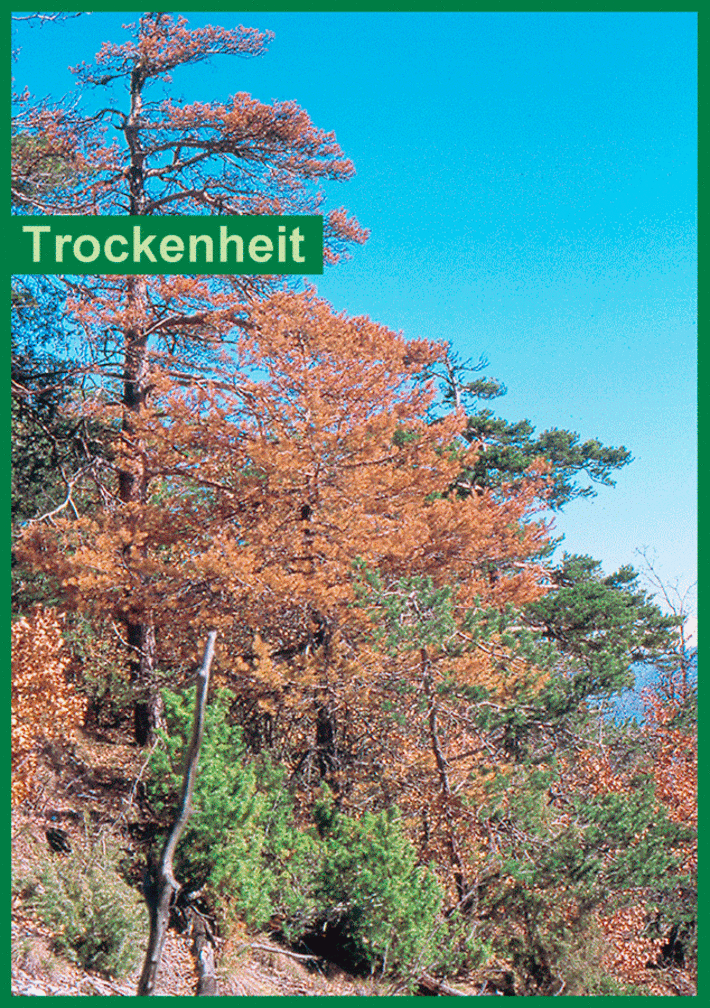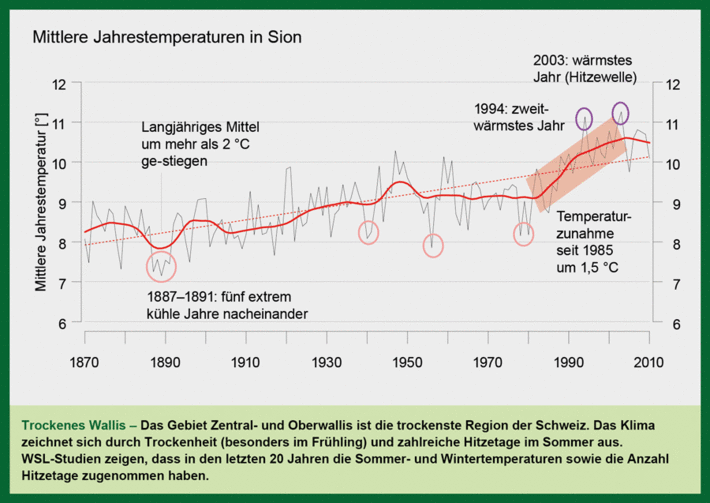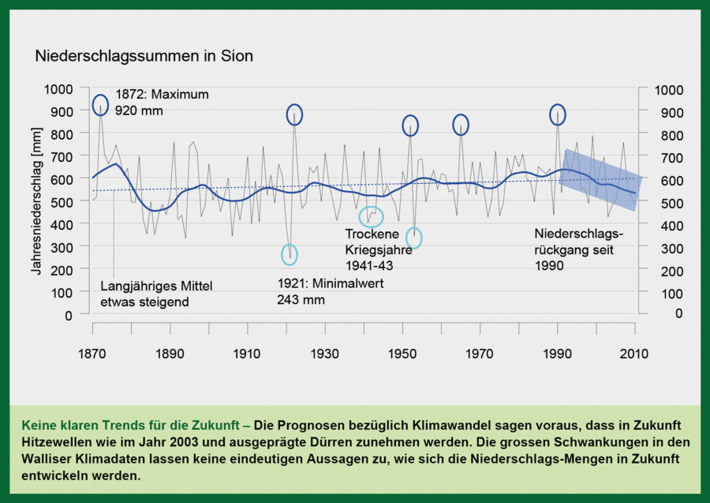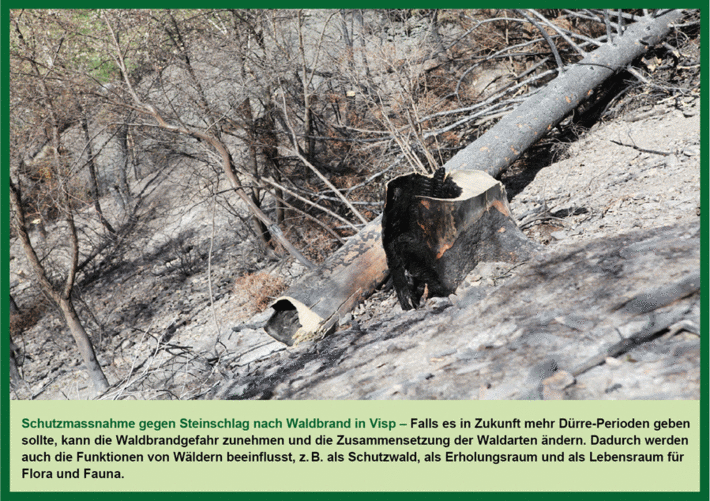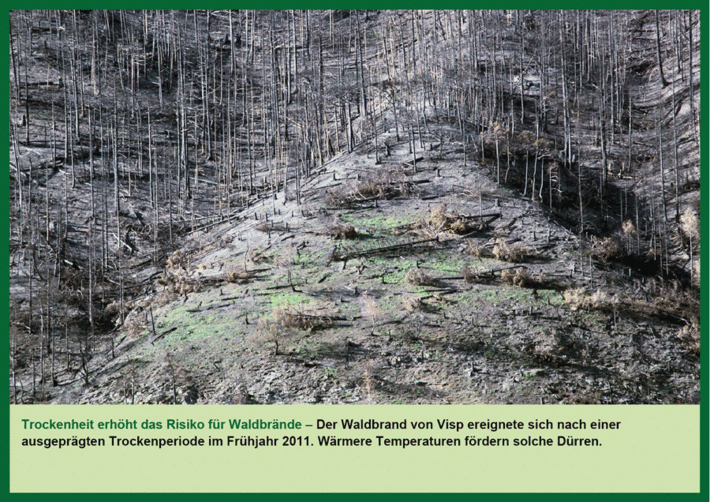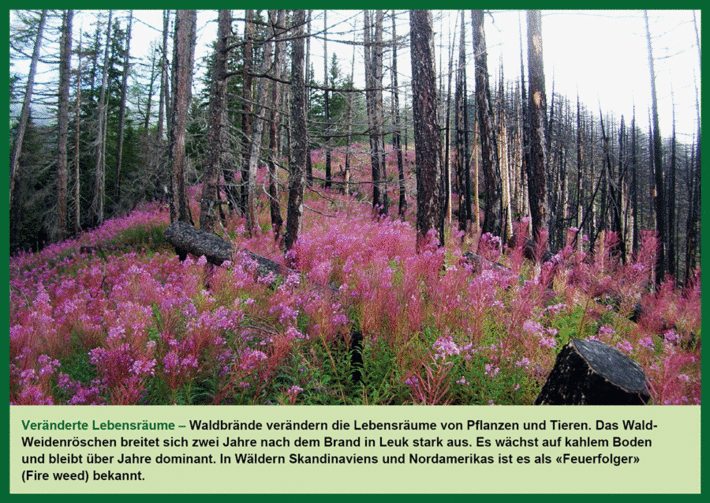Trees under water stress: forest and drought ¶
Will trees die of thirst and dry up if the climate becomes warmer and rainfall scarcer? We are examining the impact of increasing drought on our forests at various locations. In the Valais, we are even irrigating an entire section of forest experimentally.
Contents ¶
Pfynwald: Understanding the death of pine trees ¶
In the Pfynwald, in the dry Rhône valley of the Valais, we have been tracking the life and death of Scots pine trees since 2003. To this end, we are conducting a realistic experiment with large, 100-year-old trees in the forest. Thanks to our cooperation with the canton of Valais, we are able to conduct a long-term study, the only one of its kind in Europe: by irrigating certain areas with sprinklers and not others over around one hectare of forest, we can find out how the ecosystem reacts to the natural drought.
We would also like to know what happens physiologically in individual trees. Between 1996 and 2004, almost two thirds of all Scots pine trees perished in some parts of the Pfynwald due to an extreme dry phase. We examine how nutrient and water supply affect the viability of the trees – both in mature trees as part of the field experiment, and in young plants in glass test chambers (MODOEK Model Ecosystem Facility).
Water supply and tree growth ¶
It takes a long time for signs that a tree is suffering from drought to become apparent. We have been monitoring the water supply of trees and gathering climate data in the Davos Seehornwald for two decades now. In order to make the Davos tree data meaningful for the whole of Switzerland, we also run the network TreeNet in collaboration with fellow researchers. In addition, we monitor the soil moisture of forests throughout Switzerland in the SwissSpot project.
As part of various projects, we find out which tree species are better or worse at coping with water shortages, and whether their origin plays a role in this. The tree species which grow best are not all native to Switzerland. Through field and laboratory experiments, we research whether and what types of problems their continued spread through Swiss forests could cause.
Information on current and forthcoming drought, or more precisely on water shortages, is available on the web platform drought.ch, which we run in collaboration with the Federal Office for the Environment (FOEN) and MeteoSchweiz (www.drought.ch).
From a single tree to an entire ecosystem
The young trees naturally react differently to their environmental conditions than their larger parents. In order to gain a better understanding of these differences, we continually compare our experimental results with those of our Long-term Forest Ecosystem Research Programme LTE, which is part of a consortium of international research networks.
- More information on the risk of drought can be found in our focus «drought in Switzerland»
Image gallery: Forests and drought (from the book Wald und Klimawandel, 2016) ¶
